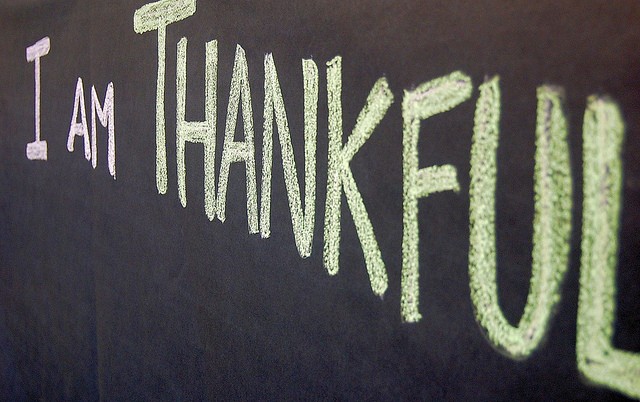
Leveraging the holiday of gratitude.
Gratitude beyond Thanksgiving.
The month of November calls for a focus on gratitude, but the topic is actually an evergreen in neuroscience and positive psychology, relevant all year.
By now, several scientific studies have been indicating the effectiveness of so called “gratitude interventions” in increasing our level of happiness. A gratitude intervention is simply an activity designed to let you experience gratitude. Three types of gratitude interventions are most common in studies and clinical trials: gratitude lists, “grateful contemplations” and “behavioral expressions of gratitude.”
Any of these gratitude interventions seem to rewire our brains for happiness – not just during the few minutes it takes to write a daily gratitude list, but for months to come. Below is an example for each type of intervention that you can try out over pumpkin pie and continue practicing in your workplace.
1. Make a list.
What? Yes, exactly that: make a list of things, people, and experiences for which you are grateful.
How: Get out your notes app or a piece of paper and list anything that comes to mind. Pay attention to smaller items and details – for example, in addition to the fact that you have a good job, note when your coworker brought you a coffee that helped you through the afternoon slump. Sonja Lyubormisky and others found that once a week seems to be the most effective frequency for gratitude lists. Schedule it on your calendar, or set a reminder for yourself.
You can also include your coworkers by making this intervention a part of your meeting routine, as I did in my job at Intel. Set aside a few minutes at the beginning of each meeting to let your team members express work-related gratitude toward each other or people outside the room. Increased productivity and creativity as well as improved work relationships are all among the potential results of this habit.
2. Contemplate.
What? Take time to think about what you are grateful for. This is similar to the gratitude list, but less structured.
How: I recommend you go for a walk (before sitting down for your Thanksgiving feast, and then any lunch break you get the chance), and dedicate just the first few minutes to gratitude. Some days a lot of items may come to mind, others can be focused on just one particular event. Bonus: Your brain gets the benefits of moderate exercise and natural light, both of which are stimulating and motivating.
Take grateful actions.
What? Express your gratitude to others – through actions.
How: Do something nice for others. No need to overextend yourself – this is not supposed to stress you out or put strain on your finances. Offering your coworker help with a task, covering the phones for the afternoon, leaving a positive review for a contractor, or bringing a snack to share (bonus points for healthy ones) are all great. You can direct this toward the people for whom you are grateful or even pay it forward.
If you are interested in reading a bit more about this topic, check out my free short ebook “This Is Your Brain On Gratitude.” I would love to hear how these interventions work for you, and how else you practice gratitude at work. Please share your thoughts in the comments, on Twitter, or on my Facebook page.
(Photo by MSOMfan on Flickr.)